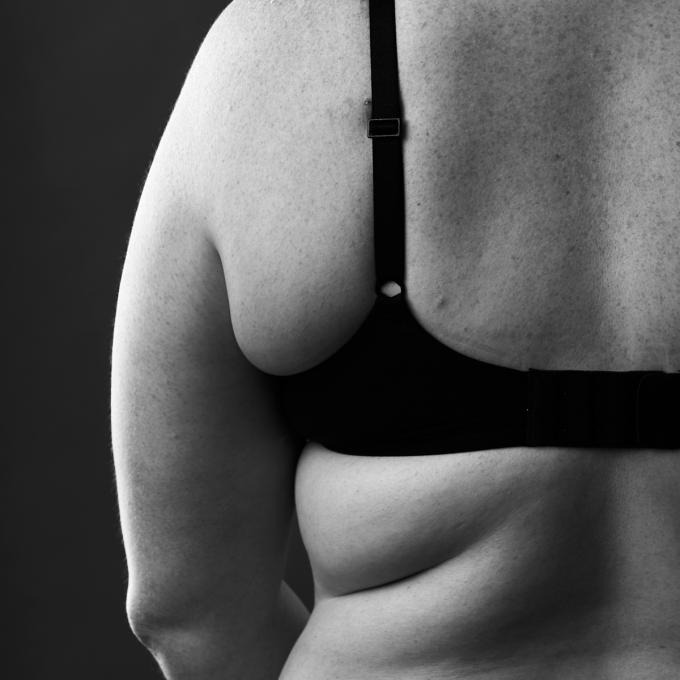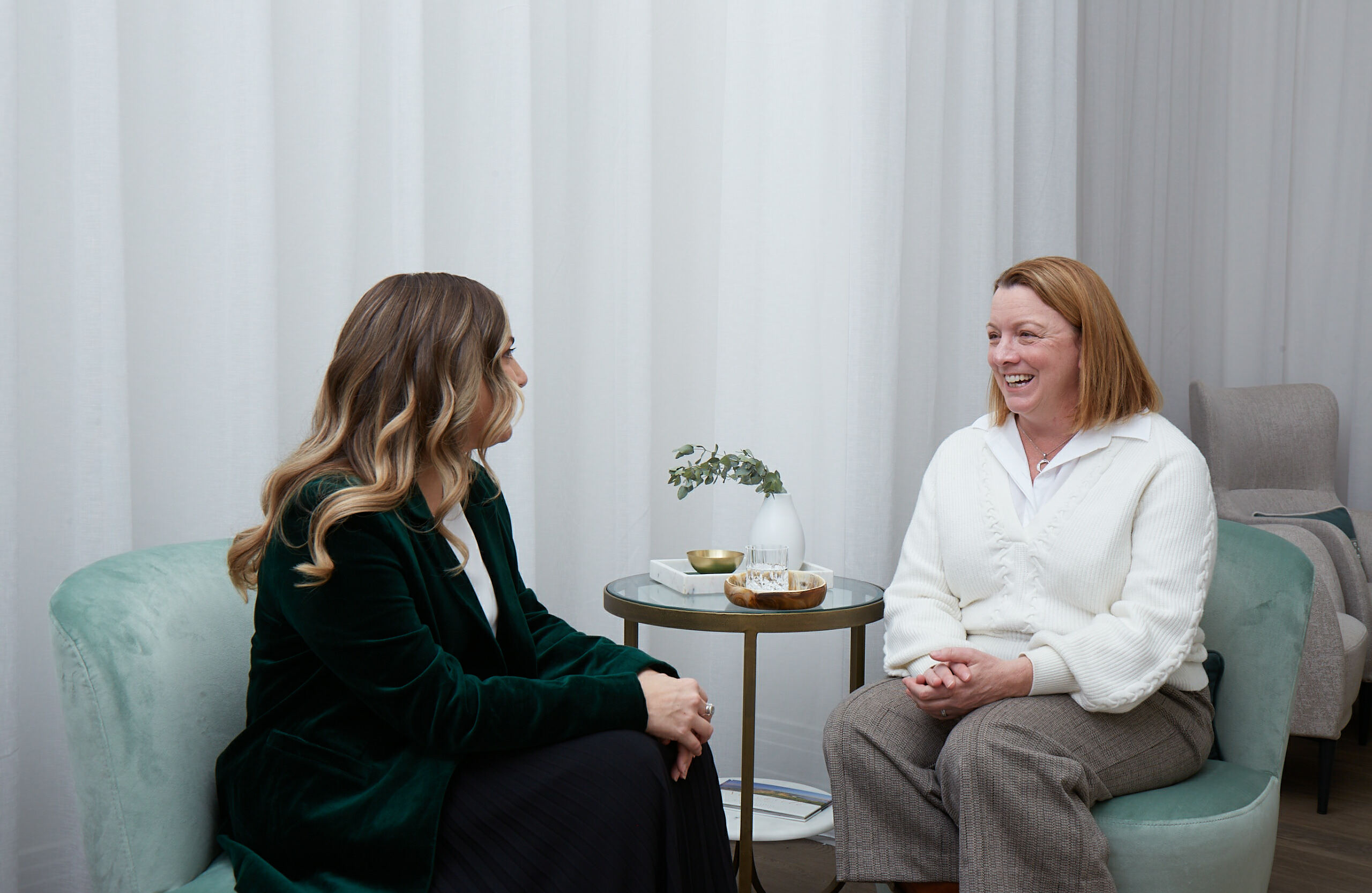
Breast reduction surgery (or reduction mammaplasty) involves a combination of skin and breast tissue removal and reshaping.
The surgery aims to reduce the size and weight of large breasts by lifting the breasts off the lower chest and upper abdomen. The objective is to leave the breasts smaller and lighter, sitting higher on the chest and closer to the body.
Physical symptoms impacting on health and wellbeing can include breast pain, shoulder, neck and upper back pain, breathing difficulties, exercise limitations, skin irritation and possible infections. Women who have disproportionately large breasts may also experience psychological distress, and this can significantly impact on daily functioning.
With age, pregnancy, breastfeeding, and weight fluctuations, breasts may continue to enlarge, progressively sitting below the breast fold and resting on the lower chest and upper abdomen. Consequently, the breasts become longer and sit further away from the body making exercise and sometimes sleeping difficult without a supportive bra.
Please note that individual results will vary depending on the individual, their genetics and lifestyle factors, and all surgeries have associated risks. Before proceeding with any surgery, it is advisable to seek a second opinion from an appropriately qualified medical practitioner such as a Plastic Surgeon. Dr. Gary Avery (MED0001633092) a registered medical practitioner, with specialist registration in Surgery – Plastic Surgery. Dr Avery is also a member of the two leading professional associations for plastic surgeons in Australia, Australasian Society of Aesthetic Plastic Surgeons (ASAPS) and Australian Society of Plastic Surgeons (ASPS). Their websites provide additional information regarding plastic surgery in Australia that you might find useful, please visit ASAPS and ASPS.
From the moment I walked into the practice, I felt welcome by the lovely team and all of my questions were answered.
Breast reduction surgery (or reduction mammaplasty) addresses the size and heaviness of the breasts as well as their shape and position, creating breasts that sit higher on the chest. The goal of breast reduction surgery is to have the breasts sitting above the inframammary fold, close to the chest, correcting the tendency of the breast to elongate, and creating a breast size that is in proportion to the rest of the chest and body.
During breast reduction surgery, the nipple and areola generally remain attached to the breast despite the appearance of the scar around the areola (appearing as though it has been removed and replaced higher up on the breast). The areola itself is often reduced, as it tends to enlarge as breast size increases. Reducing the areola brings it back into proportion with the new smaller breasts.

Anne-Marie, our Care Team Manager - and member of our Care Team.
Patients considering any form of breast surgery will need to come in for a consultation with Dr Avery to discuss your expectations, along with the surgical options for how these can be achieved. During your consultation with the Avery team, we will ensure that the surgery you are considering is the appropriate choice for you.
At Avery, we welcome the opportunity to have an open conversation with you to understand the changes you are looking for with surgery. Our patients’ stories matter a great deal to us.
Wherever you are on your personal journey, we would like to assist you. Your reasons for having surgery and your expectations from surgery are important conversations to have before undergoing surgery. Dr Avery will also assess your health and medical history to ensure any surgical procedure you are considering is a safe and appropriate choice for you.
Your Breast Reduction
Your GP or another specialist that knows you well must make a referral to Dr Avery. The decision to have a consultation may be made after talking with family or friends or following your own research into plastic surgery and Dr Avery.
The purpose of your initial consultation with Dr Avery is to discuss your motivations for surgery and expectations from surgery. It is an opportunity to openly communicate what you want to change, alleviate or remove. We will discuss any concerns you may have about your potential surgery and its outcome. We will also collect information that is specific and tailored to you, to add to the knowledge you acquired through your research outside of the consultation process.
When you arrive at Avery, you will check in with our Care Team and complete a medical history form, if not already completed. We encourage you to bring a supportive family member or friend who can remain with you throughout the consultation if you like, and be a sounding board during your decision-making process following the consultation.
The consultation with Dr Avery will include an examination of the area of your body that you are concerned with and considering changing. Our aim will be to determine if plastic surgery can achieve what you hope it will, and if so, what specific plastic surgery procedures will address your concerns and meet your expectations in a realistic way.
Plastic surgery procedures can impact physical appearance and there may be a psychological response to the changes in your body after surgery. Besides the reasons for having plastic surgery, it is important to be fully aware of any potential limitations of the operation and how they apply to your unique situation. This includes the risks of having surgery and all of the possible complications that can occur after surgery, and what can be done if these occur.
We will discuss what the surgery involves, how it relates to you specifically given your uniqueness and current state of health, what the possible risks of the surgery are, and then decide if having the surgery is a safe and appropriate choice for you as an individual.
Your consultation will also include a discussion of the estimated financial implications of having this surgery or surgeries that were discussed with Dr Avery.
After your consultation, our Care Team will be there to talk through any further questions you have, including the cost of the surgery.
At Avery, our goal is to ensure you are equipped with the knowledge needed for you to feel empowered throughout the decision-making process, surgery and post-surgery.
There are several techniques used in breast reduction surgery depending on the existing breast tissue, the need for future breastfeeding and the desired aesthetic outcome.
These are some of the common surgical techniques used for breast reduction:
Anchor Incision
This is the most commonly used technique, where incisions are made extending around the areola, down the midline of the breast, and across the lower crease of the breast.
Vertical Incision
This incision extends around the areola and down the midline of the breast, without the incision underneath.
Free Nipple Graft
A free nipple graft incision removes the nipple and relocates it higher up on the breast. Scarring in this case may be similar to an anchor incision.
The scars from the incisions made during breast reduction surgery are placed around the newly sized areola, and continue from the lower part of the areola, down the front of the breast to the breast fold and then possibly along the breast fold for a variable distance.
This surgery can take anywhere between 2-4 hours, depending on the amount of breast tissue being removed and the amount of breast reshaping needed. Your individual anatomy and expectations will determine the best surgical technique for you and will be discussed at your consultation with Dr Avery.
As with all surgical procedures, Breast reduction surgery does have risks, despite the highest standards of practice. It is not usual for any surgeon to outline every possible side effect or rare complication of a surgical procedure. However, it is important that you have enough information about the most common risks to fully weigh up the benefits, risks, and limitations of surgery.
The following possible complications are listed to inform and not to alarm you. There may be other complications that are not listed. Smoking, obesity, and other significant medical problems will cause greater risk of complications.
Some general risks and possible complications of surgery include, but are not limited to the following:
- Heavy bleeding from an operated site. This may require a blood transfusion.
- Infection that may require treatment with antibiotics or further surgery in some cases.
- Allergic reaction to sutures, dressings or antiseptic solutions.
- The formation of a large blood clot (haematoma) beneath an incision site may require further surgery.
- Complications such as heart attack, pulmonary embolism or stroke may be caused by a blood clot, which can be life threatening.
- Pain, bruising and swelling around the operated site(s).
- Slow healing, often related to smoking or diabetes.
- Short-term nausea following general anaesthesia and other risks related to anaesthesia.
- Tissue cannot heal without scarring and that how one scars is dependent on individual genetic characteristics. Dr Avery will do his best to minimise scarring but cannot control its ultimate appearance.
- Smoking or using nicotine products during the 3–4-week pre-operative and post-operative periods is prohibited as these could dramatically increase the chances of complications.
- All medications I am currently taking, including prescriptions, over the counter remedies, herbal therapies and supplements, aspirin, and any other recreational drug or alcohol use can affect the safety of my surgery.
- There can be no guarantees about the results of any surgery.
Some specific risks for breast reduction surgery include, but are not limited to the following:
- Bleeding / haematoma requiring surgery
- Infection
- Asymmetry of breasts and/or nipples
- Delayed healing
- Discoloration / swelling
- Different size than expected
- Change in nipple and skin sensation
- Discomfort (pain/sensitivity)
- Further surgery required (revision surgery)
- Disappointment/unsatisfactory result
- Further recovery time if further surgery is required
- Wound separation
- Nipple retraction/poor contour
- Restricted activity
- Skin or nipple loss requiring further treatment
- Stretching/loosening of skin with recurrent sagging
- DVT (deep vein thrombosis) – clot in legs or PE (pulmonary embolus) – clot in lungs
- Allergic reactions to tape, suture material, topical preparations, medications
The Australasian Society of Aesthetic Plastic Surgeons (ASAPS) has further information about breast reduction surgery including the possible risks for this surgery.
Generally, one or two overnight stays are required post-surgery to aid with recovery. Depending on the complexity of the surgery, up to two weeks off work may also be recommended.
If you have undergone another surgery in addition to the breast reduction, a longer stay in hospital might also be necessary for recovery. As with any operation, you will need to organise somebody to drive you home. We encourage our patients to have another adult stay with them during the first night after surgery.
After breast reduction surgery, you will be required to wear a compression garment for 4–6 weeks to provide support and reduce post-operative pain or swelling, which generally subsides about two weeks after the surgery.
A customised pain relief program will be created for you and issued before you leave the hospital. If circumstances change at any stage during the recovery period, we can adjust the pain medication accordingly.
The financial aspects of your surgery are as important as the medical elements when planning for surgery. At Avery, the surgeries we offer fall into three different financial categories: Self-funded – aesthetic surgery; self-funded – plastic and reconstructive surgery; and health insured – plastic and reconstructive surgery.
To make sense of these three financial categories, we have created a detailed price guide to help you understand what may or may not be covered by your health insurer/Medicare and your out of pocket expenses.
To download this guide, please click here.
For more information or to book a consultation, please contact our team on 02 4002 4150.
Breast Reduction FAQs
Skin and breast volume or size. The breast volume beneath the skin is made up of firm glandular breast tissue and fat. During a breast reduction both skin and breast tissue/fat is removed.
The scars from breast reduction surgery incisions generally look like a thin line, initially red and a bit raised above your skin. Appearance will vary depending on the surgical technique used for the surgery and your genetics. Some people are more prone to hyperpigmentation and hypertrophic scars or keloids. Most scars should eventually fade and flatten but will still be visible.
For a full list of risks associated with breast reduction surgery, please visit the risks section on this service page.
Scars from a breast reduction are typically referred to as either a lollypop or anchor.
Around the areola (generally reduced in diameter), from the lower part or 6 o’clock aspect of the areola down to the lower breast fold (this is the lollypop), an additional scar in the breast fold joined to the lollypop makes an anchor.
It is possible that you may lose sensation partially or completely after surgery. Maybe temporarily. For others, this may be permanent. For risks associated with breast reduction surgery, please visit the risks section on this service page.
Despite the final scar being around the entire areola, giving the appearance of the nipple and areola being removed and replaced higher up on the breast, for the vast majority of people the nipple and areola remain attached to the breast at all times. For the very small number of cases where the nipples are removed (nipple graft) the possibility of temporary removal will be discussed prior to surgery. This difference is important for several reasons, including appearance, nipple sensation and breastfeeding.
Technically the nipple is the central part that protrudes above the breast, the areola is the larger flatter coloured part around the nipple. Generally, the diameter of the areola is made smaller, as this is often larger than average as breast size increases. The nipple itself does not usually require any surgery.
For most women, it is generally possible to breastfeed following breast reduction surgery. Typically, the nipple and areola will remain attached to the breast tissue maintaining the pathway from the milk-producing part of the gland to the milk ducts in the nipple.
It is generally best to wait until breast growth has ceased and also that the patient is mature enough to understand and cope with the process of surgery and recovery.
Most swelling will be gone by about 6 weeks post-surgery. More subtle changes can continue to occur for several months and up to one year after surgery. Everyone is unique and as such this is a guide only.
A second breast reduction is possible. This is often chosen by women who have had an initial breast reduction earlier in their life. The same benefits and risks apply to the second reduction. For a full list of risks associated with breast reduction surgery, visit the risks section on this service page.
Gentle walking is advised and recommended during the first 2 weeks. An increase in activity is encouraged between 2-6 weeks, limiting this increase based on how your body feels and responds. From 6 weeks you can be mostly unrestricted, but it may not be until 12 weeks post-surgery that you feel you are back to pre-surgery fitness.
A breast reduction aims to reduce the volume or size of the breast by removing skin and breast tissue. With removal of skin and reducing the weight of the breast, the breast will sit higher on the chest and also closer to the chest.
Pain following top surgery will vary depending on the extent of surgery. Pain immediately after surgery may be reduced by the use of local anaesthetic at the surgical site given during the surgery. The pain will also be managed with tablets or injections as required. Physical measures such as the dressings and supportive garments as well as limited movement and possibly ice packs will all help minimise any pain. Pain is usually well tolerated within a few days after surgery with all these measures. If your pain is increasing following surgery this is usually a sign that you may need a review to ensure your recovery is proceeding as expected.
Dressings and supportive garments will offer support to the wounds and the areas of your body that are still recovering. You will be also be advised to restrict excessive movement of the surgical area in the first two weeks after surgery. A good general rule throughout your recovery is if an increase in movement or activity does not increase any discomfort or swelling, then it is probably safe and this gradual progression back to ‘normal’ will be encouraged.
Breast Implant Replacement
Breast Lift
Breast Augmentation
View all services
Your initial consultation
During your initial consultation we welcome the opportunity to have an open conversation with you to understand the changes you are looking for with your surgery and talk through any concerns or specific goals you may have.
Your initial consultation will include an examination of the area of concern and we'll work with you to determine if plastic surgery can achieve what you hope it will, and which specific plastic surgery procedures will address your concerns and meet your expectations in a realistic way.
The procedure may be combined with other aesthetic surgical procedures on the breast such as breast lift, breast implant replacement and breast augmentation.

Dr Gary Avery